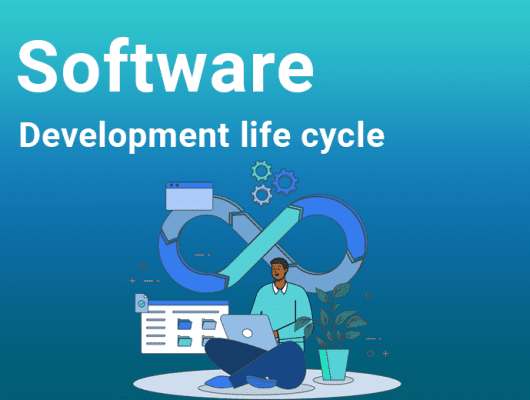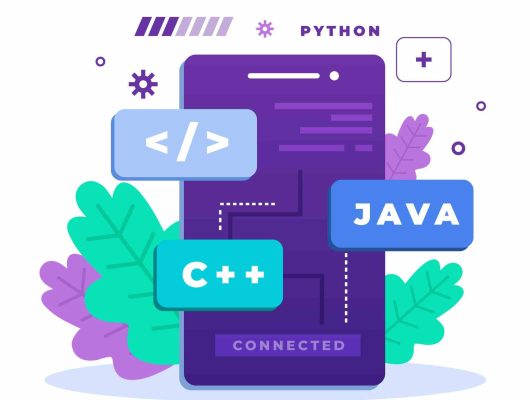
Software Development Pricing Models ( Ultimate Guide)
Software development is undoubtedly complex. This procedure has numerous and precise steps based on the requirements. In addition to coding, software development encompasses business research, project roadmap formulation, architecture, wireframing, design, testing, and more. So, considering it costly makes sense.
However, it could be challenging for someone unfamiliar with it to comprehend what they are paying for and why. Therefore, we have developed this guide on software development pricing models to assist you.
This guide is all about understanding expenses of your software development project. What are the appropriate techniques to use it? and how to manage them.
So, without wasting the time, let’s begin.
Table of Contents
1. Type of Software development Pricing Models

There are numerous software pricing models. Let’s talk about each of them solely.
1.1. Fixed price model
This software development pricing model is ideal for short-term agreements with specific project specifications, such as creating landing pages. This project requires well-written and explicit criteria to give the team a clear view of the ultimate output. It comes with a fixed time, release date, working hours, and budget. Therefore, it does not include sick leave and technical delays. So, before using it careful project management and accurate planning are essential.
When is it appropriate to employ a fixed-price model for software development?
This model is suitable to employ when,
- The project you have in mind is small and has a limited timeline—less than two months.
- You don’t want to be directly involved in the development process. Reaching a consensus upfront and giving the team control over the project is preferable.
- Every necessary technical document, such as the plan, SRS, design layout, processes, etc., is available.
- It is more convenient to assign all work to a third-party team since no one wants to oversee the work individually.
- Lastly, if you are certain that your project requirements will not change in the future.
Pros:
- Before the development, the client must thoroughly know the project’s Cost.
- Defined project boundaries and expected outcomes.
- Less risk to the client’s finances.
Cons
- Restricted flexibility.
- Higher upfront expense.
- Limited possibility to execute the client’s requests for additional features or changes.
1.1.1 Variations of fixed-price Software development pricing models
Fixed-price software development pricing models come with various variations, such as:
a) Fixed-budget Pricing Model
This software development price model has a defined budget but allows for project timing and scope changes. It comes with fixed resources as well.
The software development company will, therefore, endeavor to create the finest solution within this budget.
This model is especially useful when you have limited funds or if your project specs and deadlines change.
b) A fixed-time price structure for software development
It centers on a team’s capacity to deliver the final product on schedule. It is beneficial when there is a change in the scope and budget of a project but not the deadline.
c) Fixed-scope price strategy for software development
This approach establishes the project scope, which is difficult to change. However, it allows you to change the budget and delivery time while keeping the scope in view.
1.2. Time and material pricing model
This software development pricing model allows you to pay for the development team’s time. It also includes SSL certificates, premium frameworks, app store submission fees, and other content.
The time and material pricing approach offers considerable financial flexibility and scope. However, this material pricing model does not imply a lack of budgetary constraints or deadlines.
The development company often estimates the time and costs needed to complete a specific scope of work. Nevertheless, you may simply adjust the scope and priorities to ensure the product satisfies market needs and user demands.
Pros
- Quick and simple to begin
- Allow for a speedy project launch
- There are no additional expenses on on-boarding or hiring a team for the client.
- Excellent flexibility.
- Availability of payment installments.
Cons
- Leave deadlines open.
- Demands substantial participation.
- Minimal budgetary control.
1.3. Milestone software development Pricing Model
It’s among the most popular software development pricing schemes on freelance marketplaces such as Elance, oDesk, and Upwork.
Prior to development beginning, the customer and house team work together to identify milestones. Once the team reaches the predetermined milestone, the customer makes the payment. As with the time and material model, development time is tracked and an hourly fee is set for each work.
Pros
- Payment for accomplishments.
- No upfront payments.
- Expected results
Cons
- Unpredicted budget.
- Undefined timeline.
When to apply a pricing milestone model
A milestone pricing model is most effective when a company has trusted ties with its customers. It works best with:
- Evaluating the selected team’s output and working style
- Constructing MVP projects with clear-cut deadlines
- Initiatives with an unbounded budget
- A milestone approach is a fantastic choice for short-term or test projects because it allows you to verify everything before charging.
1.4. Dedicated team pricing model
A dedicated team is one of the software development pricing models in which the cost of the project is proportional to the time that your team invested in.
Additionally, it allows the client to have a high level of control over team management. Thus, the salaries of the team members make up the development price.
How does it Work?
The software development company you select offers the resumes of possible experts who can do the jobs you require while discussing the project and establishing estimates. After that, you pay the team their monthly salary. Remember that customers have a significant influence over this pricing model. Because they may directly interview and evaluate the expertise of team members who will build the product.
Pros
- Complete control over the development team
- Less Administrative work
- Clear Project understanding
Cons
- Required sufficient amount of time to manage the team
- Not Cost effective
For what do you pay?
If you hire a dedicated team, you will be liable for a small monthly administrative charge in addition to the team’s compensation. Note that the contract between you and the team specifies the charge and the compensation.
When to apply
This model is suitable for the project when
- You wish to oversee the team closely and directly influence the development process.
- This approach is ideal for you if you have significant project management expertise.
- You want to oversee the scope of work and budget during development.
- Projects where you aim to personally assemble a team and get to know the individuals working on your project.
1.5. Mixed price model
The Mixed model is a more affordable option for projects without precise needs or objectives than the traditional T&M pricing model. Based on the estimate, clients can establish a fixed price. Its resource deployment and well-aligned processes make it the finest of the Fixed-priced and Time-material models.
Moreover, the hybrid model is perfect for projects with ambiguous needs and objectives at the outset. It allows early feedback and can be modified to achieve the best outcomes.
Note that customers who wish to pay hourly rate or once will find this model appropriate.
Pros
- Financial flexibility to the customers
- Provide access to a service-controlled environment
- Flexible development.
- Allow to add services that are vital to the project’s success
- Allow you to examine the project solely at specific stages if you are working under time constraints
Cons
- Unclear financial plan
- It’s usually off to a slower start.
When to apply?
Like the time and material model, the mixed model is an excellent option for projects where some requirements are known before launch. Subsequently, you can anticipate swift execution by adding more features, platforms, and other development elements as needed.
Moreover, it might solve your problems if you know exactly what solution you want at the end of the project but are unsure how to get there. It lets you assess the project’s progress at various points during its duration and make adjustments as needed. Similar to fixed-price projects, short-term projects with a set deadline are best suited for the price-fixed + model.
Additionally, the stakeholders can benefit from having a clear deadline, flexible requirements, and a somewhat flexible budget when the project lasts two or three months.
1.6. SDaas Model
SDaaS enables you to subscribe monthly to a pre-built multipurpose team that fits your project.
This software development pricing plan includes all the services that your project would need, such as
- Turnkey advancement
- IT Consulting
- Audit
- Development
- Testing and support.
What you purchase
A predetermined set of features is required to produce software sold for a specified monthly price.
Pros
- Predictable prices
- Better planning of your finances and steering clear
- Streamlined response to your inquiries
- Lack of micromanagement
- Fast Assessing
Cons
- Vague knowledge of the ultimate spending plan.
- Preliminary estimations do not ensure that the team will stick to them because the project may change as it progresses.
When to apply an SDaaS framework
In order to use SDaas framework, consider the following situations
- You have a set monthly budget that you wish to stick to for software development.
- Setting and reviewing project priorities while developing your product calls for flexibility.
- You want a development firm to support you and offer suggestions.
2. Factors to consider for the Pricing model
Numerous factors influence the pricing model selection for software development, such as:
2.1. Range
Your choice of price model may depend on the complexity of the project and the level of information. If your requirements are adaptable, T&M, SDaaS, or dedicated team models can provide development process agility. Fixed-price options have the potential to ruin a project of this nature.
2.2. Objectives
The collaboration and price structure should consider your needs, whether for an instant performance increase, MVP development, or a reliable team to manage your current software solution.
2.3. Time frame
Specific software development pricing models—like fixed-price contracts—are more appropriate for medium- to long-term projects, while others are better suited for shorter-term initiatives.
2.4. Budget expectations
Dynamic monthly payments are frequently the outcome of collaboration under time and material or milestone models. Hence, if you want more control over your monthly development costs, you can select a dedicated team pricing model, fixed-price, or SDaaS.
2.5. Degree of participation and control
DaaS and fixed-price pricing models for software development anticipate minimal customer interaction, whereas milestone and T&M models demand your active participation.
2.6. Spending strategy
What is the maximum amount of money you will spend on the software? Dedicated team contracts are usually the most expensive, followed by fixed-price agreements.
2.7. Flexible
To what extent is the project scope and timetable flexible enough for you? The most flexible options are found in T&M contracts and dedicated teams.
2.8. Threat
What level of danger are you ready to accept? Time and materials contracts shift the risk to the client, while fixed-price contracts reduce it. Similarly, Mixed-price models and dedicated team contracts are in the middle.
2.9. Experience
A time and materials contract or a mixed pricing model can be more comfortable if you have experience managing software development projects. Consider signing a fixed-price contract if you lack expertise in overseeing software development projects.
Selecting an appropriate price model might be difficult in certain situations. But don’t be alarmed. OnyxTec is an experienced partner that can help you make the right decision for your technical, financial, and business needs.
Conclusion
Selecting a software development price model maximizes the benefits of collaboration between the development company and the client. The decision is mainly influenced by the nature of the project and your expectations about timeliness, Cost, and involvement.
Software product development pricing approaches such as time and materials, milestones, and dedicated teams can provide great flexibility. Whereas, Fixed-cost contracts and SDaaS subscriptions, can make financial planning simple.
Each model has their own ups and downs based on the project requirement. As a result , it becomes hard to choose the appropriate one. But worry not and feel free to contact Onyxtec, where we discuss your project in more detail and help you select a payment method that meets your expectations for involvement, Cost, and time.
FAQ
a. How can software developers select the best pricing model?
Every pricing model has advantages and errors. It would help if you decided based on your project and the company’s needs.
These are the crucial factors to take into account:
- How intricate your project is
- What is the number of workers that you would like to add?
- Your spending limit?
- The project’s duration
- To what extent do you hope to exert authority over the team?
- Long-term projects should consider something other than fixed-price models or variations.
b. What does a committed team entail?
A committed team is a group of experts that a software development company offers to a customer on an extended basis. The crew is entirely under the client’s authority.
c. Which model is the most excellent option to choose?
Everything depends on your financial situation and aspirations. Fixed pricing is better for a small, rigid project, for instance. T&M counterbalanced the erratic demand and unclear scope.
Furthermore, large-scale projects requiring more control work best with a committed team. As the scope of the project is clear from the start, helping the team to work hassle free.




